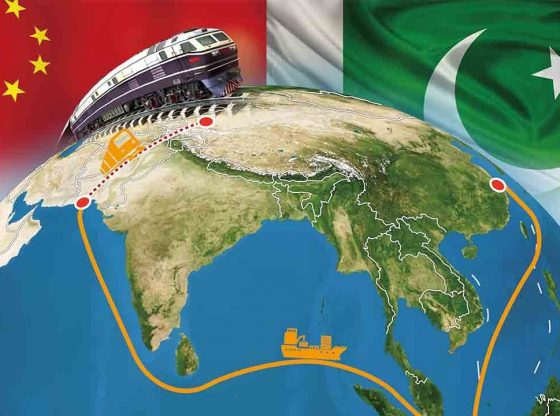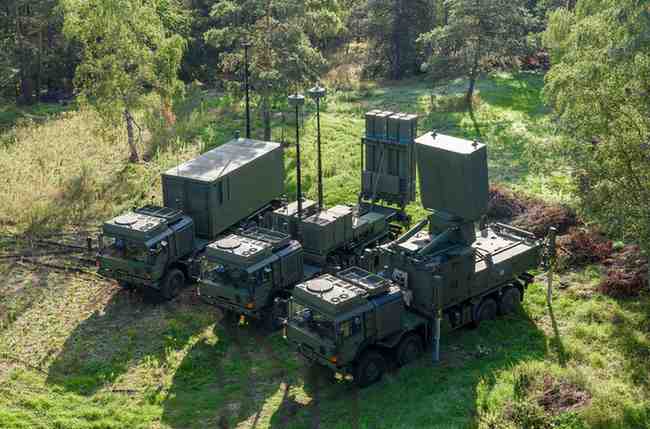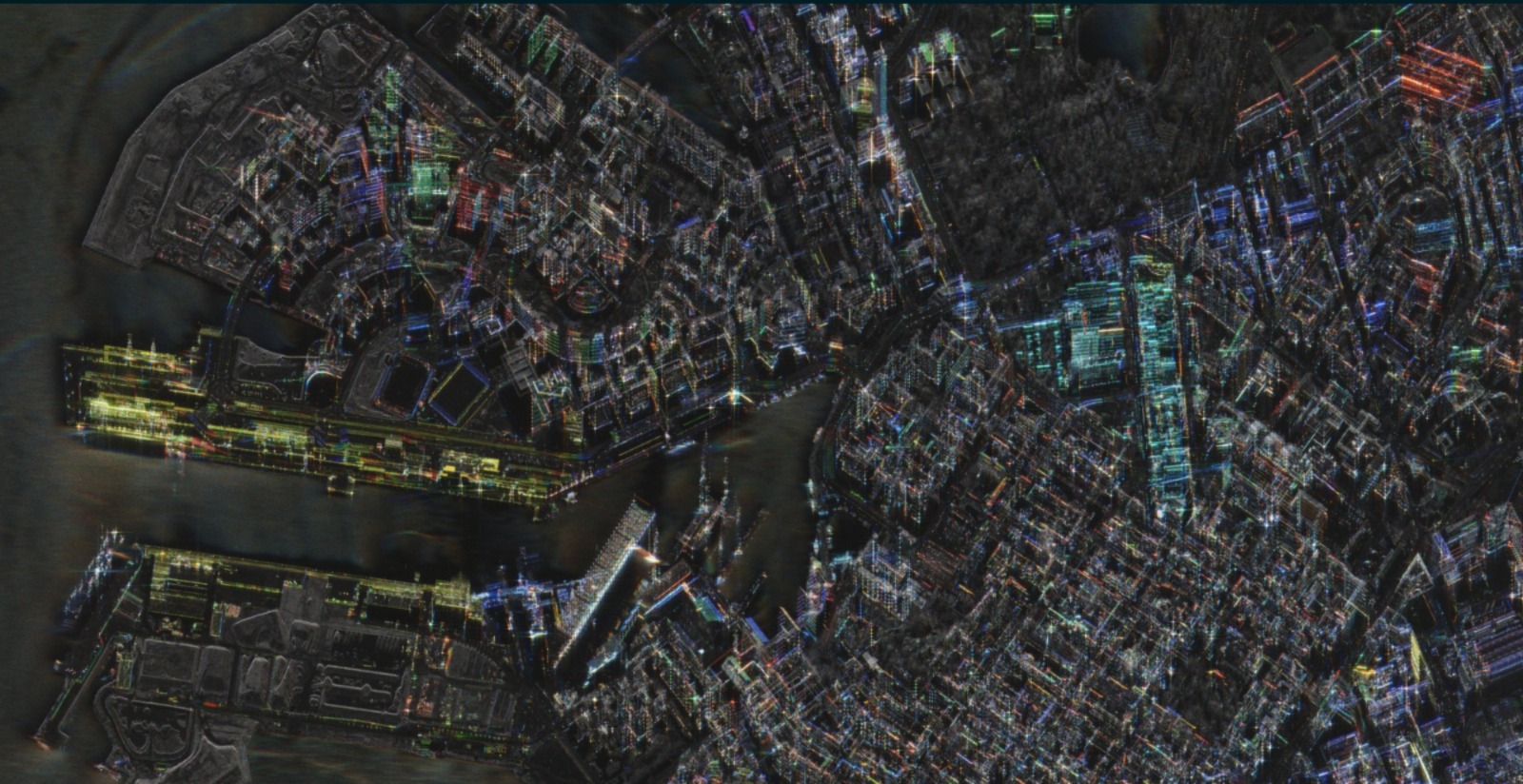Abstract:
China-Pakistan Economic Corridor (CPEC) is a buckle in the belt of the infamous Belt and Road Initiative. It is the largest foreign direct investment in Pakistan’s history and has the potential to be a game changer in the region. The projects are aimed to build infrastructure, industries, special economic zones, power plants, and research centers. CPEC converges interest of both China and Pakistan and is mutually beneficial for both countries. However, the road to its successful completion is dotted with many challenges be it national or international. Therefore, the need of the hour is to work in close collaboration in order to execute this revolutionary project in its true letter and spirit.
Introduction:
The China-Pakistan Economic Corridor, popularly known as the CPEC is a flagship project of the well-known Belt and Road Initiative. It is a 15-years infrastructural development project that’s being built across Pakistan. It comprises building of railways, highways, extending deep water ports, and constructing multiple energy projects and special economic zones. Ensuing, the project is aimed to swiftly enhance the country’s economy. CPEC is the largest foreign direct investment of Pakistan’s history. China has committed to invest more than 62 Billion USD[1] by 2022; far more than 54 Billion, planned previously. Although most of it would be used for building infrastructure however, a major chunk of it would be financed in the power sector to help banish energy crises. Collectively, CPEC is expected to contribute extensively to the country’s economy while bringing regional connectivity.
Literature Review:
In the article “Socio-cultural Impacts of CPEC” by Usman Ghani. Published by Journal of Transport and Land Use, it is asserted that CPEC has the potential to increase cultural cohesion between different areas of Pakistan. It not will help settle the people’s grievances of less privileged areas but will also aid in enhancing the security conditions by providing an inclusive economic opportunity.
In the monograph “CPEC and Pakistani Economy” authored by Ishrat Hussain, the author is of the view that CPEC can prove a game changer for the country’s feeble economy. It not only will generate employment opportunities by inducing economic activities but will also improve the investors trust and thus, will aid in attracting more foreign investments in future.
In the article “CPEC- A harbinger of economic prosperity and regional peace”
authored by Ahmad Khursheed and published by Asia journal of German and European studies, the author is of the view that not only will CPEC aid in improving Pakistan’s economy but will also strengthen the country’s defense. The author supports his stance through considerable arguments, one of them being that, CPEC will involve extensive interest of China and other regional actors thus, the economic significance of the project will act as a deterrence against India’s hostile measures.
Understanding China’s Belt and Road Initiative:
The Belt and Road Initiative is not an economic strategy of China but is also an integral component of its foreign policy. Both the Silk Road Economic Belt and Maritime silk road serves a critical purpose in bringing regional connectivity by serving a linking Eurasia, Africa and Oceania to China. It focuses on five main areas of collaboration: development policy coordination, infrastructure and facilities networks, investment and trade partnerships building, financial cooperation enhancement, and broadening of social and cultural exchanges. For this purpose, over 1700 projects have been initiated globally and more than 50 Chinese state owned firms have been working round the clock, in over 146 countries. The BRI projects are collectively made up of six economic corridors, one of which is the CPEC. BCIM, NELB, CMREC, CCWAEC, and CICPEC are some of the other routes. However, BRI is not only limited to infrastructure projects, it also comprises of several financial institutions: AIIB, and Silk Road Fund are just to name a few. All of the above mentioned measures are aimed to put China in the economic-political orbit of the Asia and European powers. This shall also provide China with the political hold over land and possible the maritime routes globally.
CPEC:
China Pakistan economic corridor forms a buckle in the belt of larger belt and road initiative by the Chinese government. As mentioned earlier, it involves a vast array of highways and railways that range from Kasghar to Gwadar. Moreover, it includes many projects like upgradation of sea ports, building of special economic zones, industries, and research facilities. Some of the major projects of CPEC are mentioned as following:
- Karakoram Highway:
CPEC aims to extend the infamous Karakoram highway to 887 kilometers, the highway will connect China-Pakistan border to the town of Burhan, near Hasan Abdal.
- Eastern Alignment:
The eastern alignment of CPEC primarily focuses on infrastructural projects in the province of Punjab and Sindh. It involves building of extensive link roads and special economic zones in the cities of Sialkot and Faisalabad. However, the main jewel in the crown is the motorway that will connect two provincial capitals i.e. Lahore and Karachi.
- Western Alignment:
The western alignment of China Pakistan Economic Corridor (CPEC) mainly focuses on projects in KPK and Baluchistan. Apart from special economic zone at Mardan and construction of air and sea port at Gwadar, the western alignment comprises of vast net of roads connecting Brahma Bahtar interchange near Wah cantt, to Yarik located just north of Dera Ismail Khan. Moreover, it also extends from Yarik to Zhob, Quetta, Surab, Hoshab, Turbat before terminating to its final destination i.e. Gwadar.
- Central Alignment:
Central alignment of CPEC shall act as a bridge by linking the Eastern and Western alignments of the project. It comprises of a series of rely networks of roads that connect important cities. It will connect Khuzdar, Layyah, Muzaffargarh, before terminating in the Dera Ismail Khan.
- Railway Projects:
Along with the construction of vast networks of highways, CPEC also aims to construct and upgrade county’s railway infrastructure. For this purpose, 4 major projects have been instigated : Complete overhaul of ML1 railway line connecting Peshawar to Karachi, an overall upgrade of ML2 railway line between Kotri to Attock, construction of ML3 railway line between Quetta and DI Khan that will terminate into southern Afghanistan and lastly, the construction of Khunjrab Line that will connect the Khunjrab pass with Havelian in district Abbottabad.
- Mega Projects at Gwadar:
Gwadar has emerged to be a hub of the China Pakistan economic corridor. Therefore, it goes without saying that the city shall house tremendous amount of developmental projects. CPEC aims to upgrade the Gwadar sea port, in order to make it capable to dock larger cargo ships. Similarly, building of an international airport is also part of the project. To protect the city from high currents, a break water will be built near the port. In order to fulfil city’s energy requirements, a liquefied natural gas facility will be built that will form a larger extension of the Pak Iran gas pipe line. Similarly, a 300 Megawatt coal power plant will also be built to accommodate city’s energy demands. Furthermore, the project aims to build schools, hospitals, hotels and resorts to equip city with a modern infrastructure, that is at par with any port city of the world.
- Energy Projects:
Energy and power shortages have remained a longstanding challenge for Pakistan. Therefore, a significant chunk of the overall investment of CPEC is dedicated to resolve the issue of energy crises. For this purpose, an array of power projects will be installed throughout the country Some of the major projects are mentioned as following:
- Diamer Bhasha Dam, Gilgit.
- Suki Kinari Hydel Plant, Kaghan Valley.
- Neelum Jhelum Hydro Power Project.
- Tarbela IV Extension.
- Thar I, and Thar II Coal Fields.
- Port Qasim Power Project.
- Extension of Pak-Iran Gas Pipeline.
Importance of CPEC for China:
China-Pakistan Economic Corridor (CPEC) is a mutually beneficial project, that presents a win-win situation for both China and Pakistan. Its importance for China is two pronged in nature i.e. economic and strategic. It shall help China to evade the US. Policies of Trans Pacific partnership and Pivot Asia Program, that are aimed to curtail China. Moreover, CPEC also provides an alternative trade route as the situation in South China Sea and particularly strait of Malacca has proved to be an existential threat to Chinese trade.
Furthermore, through CPEC China wants to expand the country’s regional and global influence. China has emerged to be the 2nd largest economy of the world and is well on its way to become the first. Therefore, it stakes in the global politics has increased and in order to safeguard those interests and stakes, China need to have a good global and regional clout to propagate its aims and aspirations.
CPEC importance to Pakistan:
Pakistan’s interest vested in CPEC has a broad-spectrum. Politically, Pakistan has had a realization that the hyphenated approach has not worked well for Pakistan, in global affairs. Therefore, Pakistan tends to adopt a de-hyphenated approach, that entails a segregation of relationship among major powers. Moreover, it strives to develop independent relations with major powers on mutually agreeable terms. The country’s leadership has reiterated its stance that Pakistan will be a partner in peace but not a partner in conflict. By associating with China and jumping on Chinese bandwagon will help Pakistan benefit from Chinas allies throughout region by bringing international integration. It also hopes for improved relation with regional and global powers.
Similarly, as far as economic benefits are concerned, CPEC is expected to be a game changer for the country. Recently the country’s policy has shifted from geo strategic to geo-economics and all efforts are being done to rejuvenate the financial conditions. In this regard, CPEC will prove a game changer for the Pakistan as it is the largest foreign direct investment in the country’s history, summing up to be more than 62 Billion dollars in total. This will include projects of infrastructure development, industries, special economic zones, up gradations of ports etc. All of which will not only help generate economic activities but also produce many employment opportunities. Moreover, the increased industrialization, innovation and technology will provide a conducive environment for business activities and will act as a magnet to attract other foreign investors to Pakistan.
Additionally, CPEC is expected to play a potent role for Pakistan in achieving its national and international security. Internally, CPEC will bring national cohesion and integration that will help fade out the grievances of the people of less developed area. Moreover, with better economy and governance, it is expected that peace would prevail. On international frontiers, CPEC will attract global powers interests, as a result the geo-economics importance of Pakistan is expected to act as a deterrence against India and other potential threats.
Threats or Challenges to CPEC:
There are series of hurdles that may acts as potential threats to CPEC on national, international, political, economic and security level. The details of them are mentioned as following:
- International Threats:
CPEC’s immense value and potential has attracted a lot of foreign threats and challenges. US, India and other European powers are just to name a few. In this regards, a series of proxies are being operated in Pakistan, particularly in Baluchistan to create a law and order situation, so that the investors may think twice before committing. There are strong proofs of links between such actors and their foreign handlers. Kalbhosan Yadav[6] is one of many examples in this regard.
- National Threats:
Potential challenges posed to CPEC can be categorized as following:
- Economic:
Pakistan has a feeble economy. High fiscal and current account deficits and irrational balance of payments have increased the country’s reliance on the loans by foreign monetary organizations. As a result, Pakistan’s currency has hit an all-time low levels. This by no means is a healthy indicator. If the economy of the country continued to deteriorate at the current pace, Pakistan would not be able to reap full potentials of the CPEC.
- Political:
One of the major challenges for CPEC comes from the political spheres, be it political instability, civil-military tussles or intra-civilian conflicts. All of them have a serious potential to derail the project, as there is no economic growth void of political stability. The swift successions to power circles, the removal of prime ministers have a serious impact on the policy making which poses a challenge in the smooth continuation of the project.
- Security:
Security challenges have remained a long standing issue of Pakistan. This not only has resulted in severe life losses but also Billions in dent to the economy. A safe, secure environment is essential to win over the trust of foreign investors. Therefore, it is of paramount importance to improve security conditions, in order to create a conducive business environment.
Conclusion:
CPEC is a flagship of the larger belt and road initiative. It is the largest foreign direct investment of Pakistan’s history and has the potential to become a game changer for the country. The foremost aspect of the project is that it is mutually beneficial for both countries. As a result, both China and Pakistan share a firm resolve to deliver the project. However, the road to its success is dotted with many challenges and threats, be it political, economic or security related. Therefore, it is essential for both countries to keep a vigilant eye on the challenges and work in close collaboration to resolve then. In a nutshell, CPEC is a revolutionary project which if implemented to its true letter and spirit, has the capacity to change the fate of the region.
Bibliography
- Akhtar, N. (2021). Exploring the Determinants of the China-Pakistan Economic Corridor and Its Impact on Local Communities. SAGE Journal, 35-37.
- Ghani, U. (2021). CPEC Social-cultural impacts of China-Pakistan Economic Corridor on the well-being of local community. Journal of Transport and Land Use, 13-17.
- Husain, I. (2018). CPEC & Pakistani economy: an appraisal. Islamabad: Centre of Excellence for CPEC,25-28.
- Khursheed, A. (2019). China – Pakistan economic corridor: a harbinger of economic prosperity and regional peace. Asian Journal of German and European Studies , 40-42.
- Hussain, E. (2019). CPEC: Governance and security challenges—Implications for the Belt and Road Initiative. Chinese Political Science Review, 4(1), 135-147.
- Hussain, E., & Rao, M. F. (2020). China–Pakistan Economic Cooperation. Fudan Journal of the Humanities and Social Sciences, 13(4), 453-472.
Authors:
Muhammad Sadiq Farooq is an undergrad student of history at Quaid i Azam University, Islamabad. His area of interest includes political and economic history of Asia.
Dr. Nelofar Ikram is a professor of political science at Quaid i Azam, University. She has a keen eye on politics and economics of Pakistan. She has also represented Pakistan on various CPEC forums abroad.
- Global Defense Insighthttps://defensetalks.com/author/umair/
- Global Defense Insighthttps://defensetalks.com/author/umair/
- Global Defense Insighthttps://defensetalks.com/author/umair/
- Global Defense Insighthttps://defensetalks.com/author/umair/













